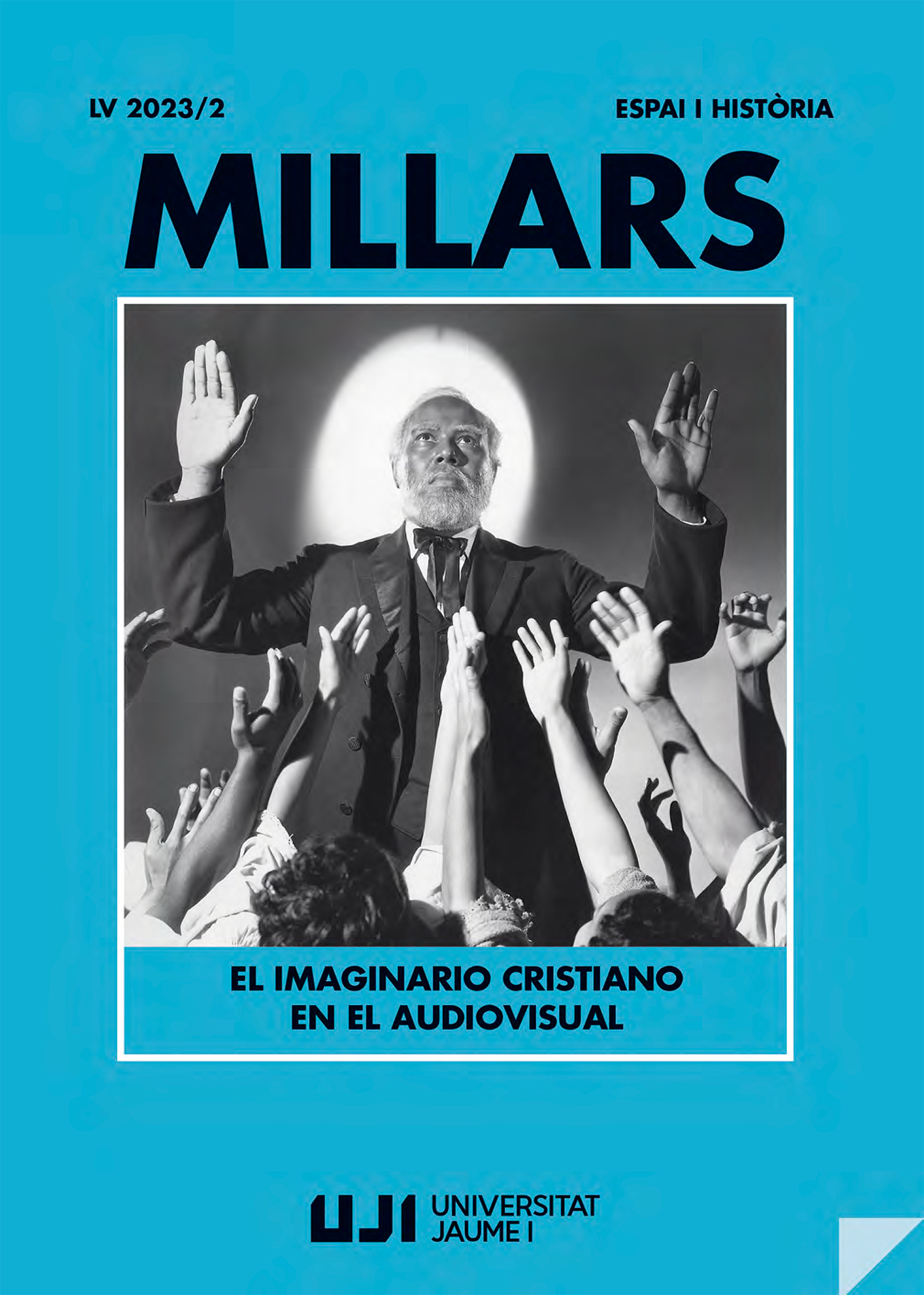Ecos místicos. Tradición y variación del imaginario cristiano en el audiovisual
Contenido principal del artículo
Resumen
En 1936 Rex Ingram encarnó a “De Ladw”, a Adam y a Hazael en el lar- gometraje The Green Pastures (Marc Connelly y William Keighley, 1936). Una producción de la Warner Bross basada en la obra de teatro ganadora de un Pullitzer y que fue una de las pocas que contó con un reparto com- pleto de actores y actrices negros
Descargas
Detalles del artículo
Citas
GUARNER, Jose Luis (1962), “El Jazz. Sus posibilidades como música cinematográfica”, Film Ideal, n. 89, pp. 74-80.
EVANS, Curtis J. (2008), “The Religious and Racial Meanings of The Green Pastures”. Religion and American Culture: A Journal of Interpretation, vol. 18, n. 1, pp. 59-93.
“1936 Award Winners”, National Board of Review Archive https://nationalboardofreview. org/award-years/1936/ (Consultada 02/11/2023).
“The Green Pastures”, American Film Institute Archive https://catalog.afi.com/Film/2220-THE-GREENPASTURES?sid=a571471c-1a8f-4032-8e8d-8404a5e6bb39&s- r=9.407792&cp=1&pos=0 (Consultada 02/11/2023).
RÉAU, Louis (2008), Iconografía del arte cristiano. Iconografía de la Biblia. Nuevo Testamento, Ediciones del Serbal, Barcelona, p. 616.
BILTEREYST, Daniel y TREVERI GENNARI, Daniela (2014), “Catholics, Cinema and Power: An Introduction”, p. 4 en BILTEREYST, Daniel y TREVERI GENNARI, Daniela (2014) (eds.) (2014), Moralizing Cinema. Film, Catholicism and Power, Routledge, Nueva York.
EUGENI, Ruggero y VIGANÒ, Dario (2006), Attraverso lo schermo: cinema e cultura cattolica in Italia, Ente dello spettacolo, Roma.
DE BERTI, Raffaele (coord.) (2017), I cattolici nella fabbrica del cinema e dei media: produzione, opere, protagonisti (1940-1970), monográfico de Schermi, vol.1, n.2, DOI: https://doi.org/10.13130/2532-2486/9629
SUBINI, Tomaso y DELLA MAGGIORE, Gianluca (2018), Catholicism and Cinema: Modernization and Modernity, Mimesis International, Milán.
MARTÍNEZ-BRETÓN, Juan Antonio (1987), Influencia de la Iglesia Católica en la cinematografía española (1951-1962), Harofarma, Madrid.
SANZ FERRERUELA, Fernando (2013), Catolicismo y cine en España (1936-1945), Institución Fernando el Católico, Zaragoza, p.16.
LYDEN, John (2003), Film as Religion Myths, Morals, and Rituals, New York University Press, Nueva York.
PLATE, Brent (2018), Religion and Film: Cinema and the Re-Creation of the World, Columbia University Press, Nueva York.
BUTLER, Ivan (1969), Religion in the Cinema, Zwemmer, Bristol; GRACE, Pamela (2009), The Religious Film Christianity and the Hagiopic, John Wiley & Sons, Newark; BURNETTE-BLETSCH, Rhonda (ed.) (2016), The Bible in motion: a handbook of the Bible and its reception in film, De Gruyter, Berlín.
MARTIN, Joel y OSTWALT, Conrad (2018), Screening the Sacred: Religion, Myth, and Ideology in Popular American Film, Routledge, Nueva York.
CASTELLANI, Leandro (1994), Temi e figure del film religioso, Editrice Elle Di Ci, Turín.
PERUGINI, Sergio (2011), Testimoni di fede, trionfatori di audience. La fiction religiosa italiana anni Novanta e Duemila: storie di santi, papi e pretri esemplari, Effatà Editrice, Turín.
SCARLATO, Alessio (2021), Il potere dei servi. La teologia politica nel cinema italiano, Ente Dello Spettacolo, Roma; BROOK, Clodagh (2019), Screening Religions in Italy. Contemporary Italian Cinema and Television in the Post-Secular Public Sphere, University of Toronto Press, Toronto.
ORELLANA, Juan (2007), Como en un espejo: drama humano y sentido religioso en el cine contemporáneo, Ediciones Encuentro, Madrid.
RODRÍGUEZ, María del Mar (2002), Cine y cristianismo, Quaderna Editorial – Universidad Católica San Antonio, Murcia.
QUINTANA, Ángel (2000), “Los dilemas de la historia del cine frente a la historia del arte”, Archivos de la Filmoteca, n. 35, pp. 178-196.


